Butomus umbellatus (Flowering Rush) - photos and description
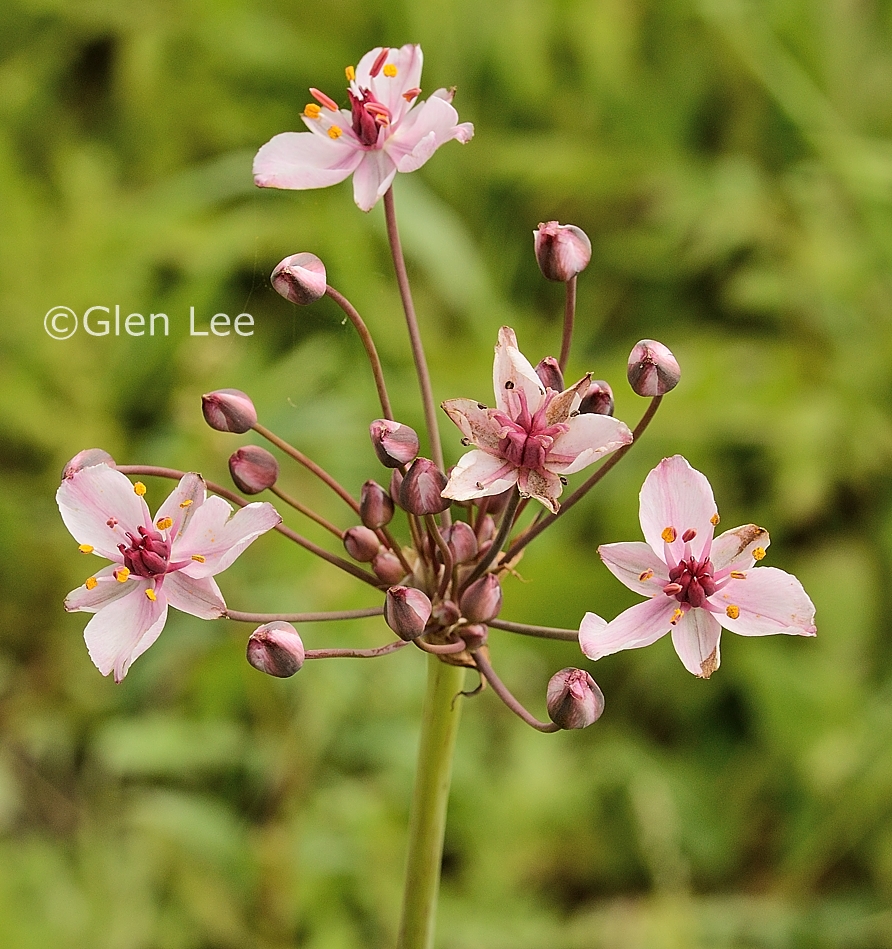
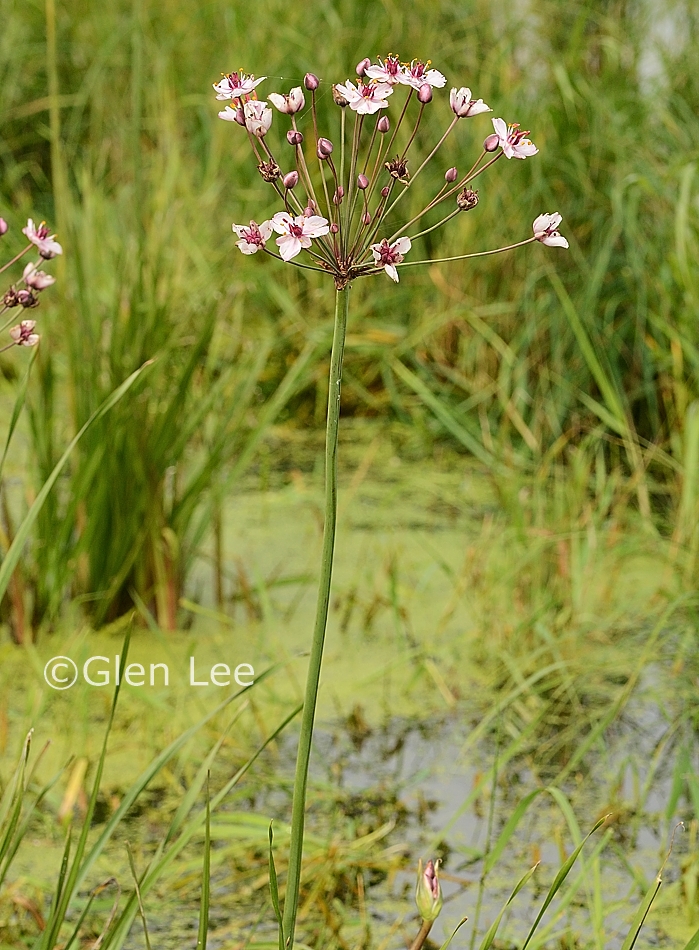
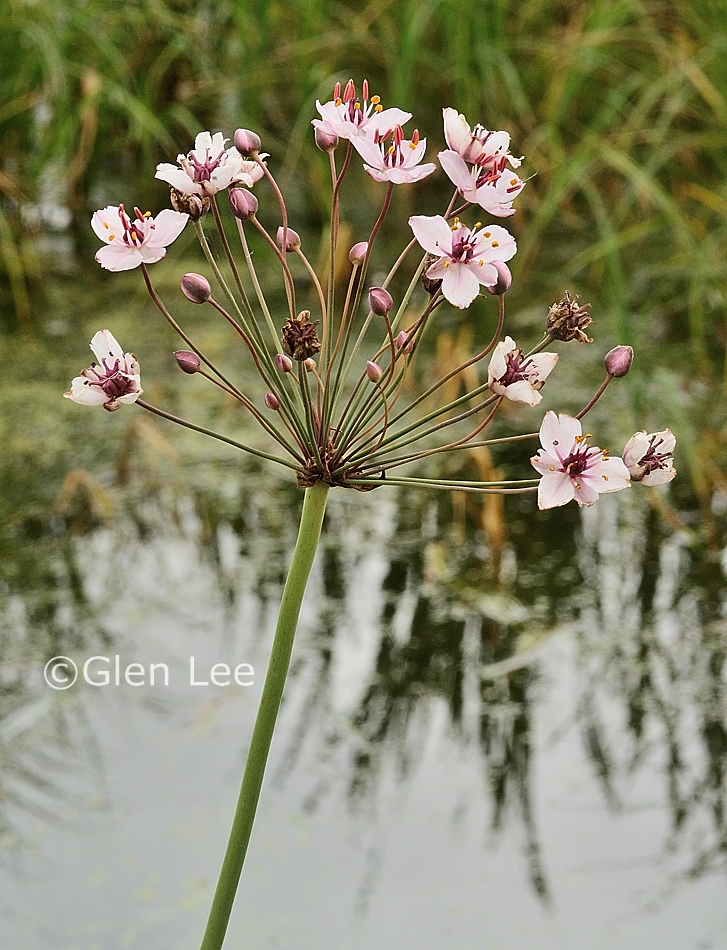
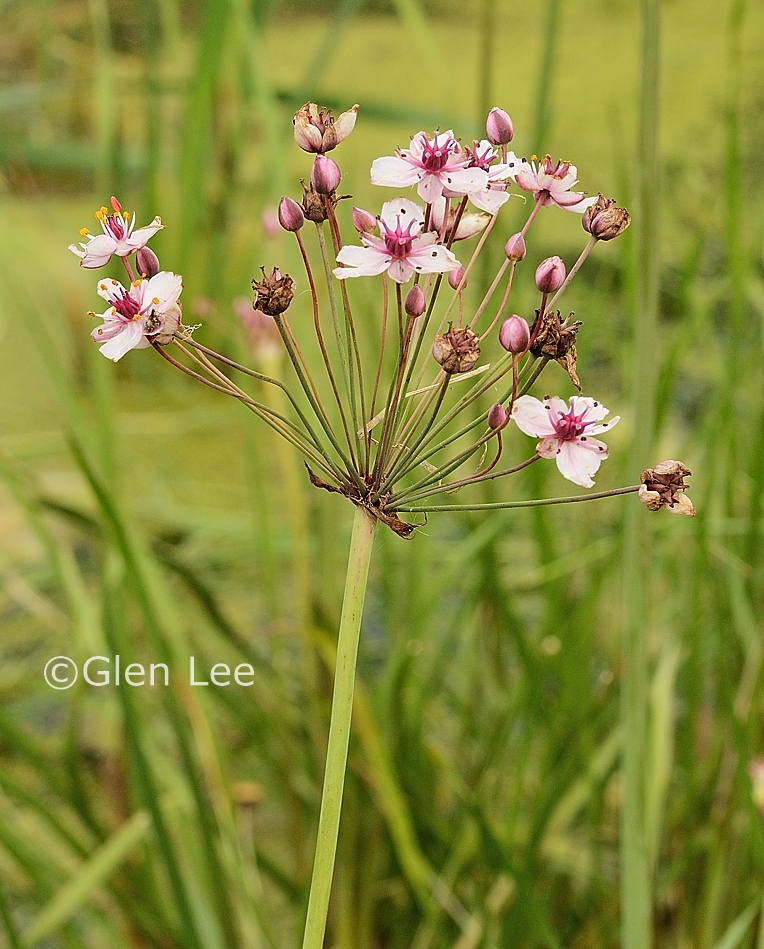
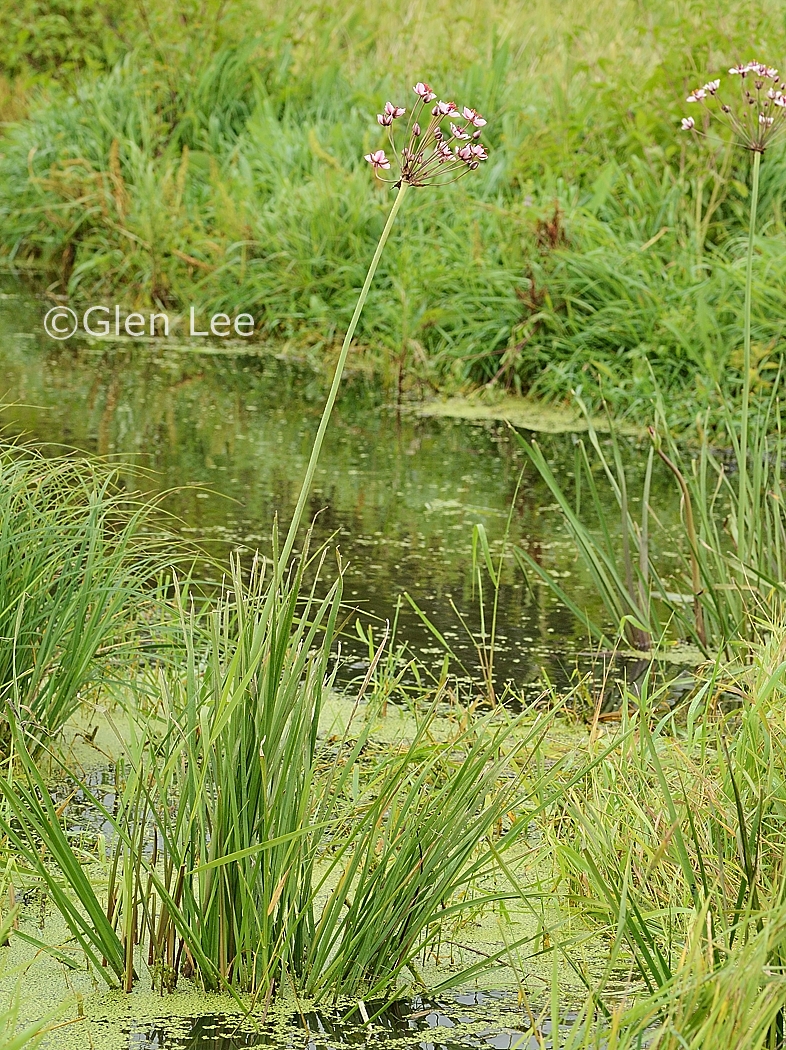
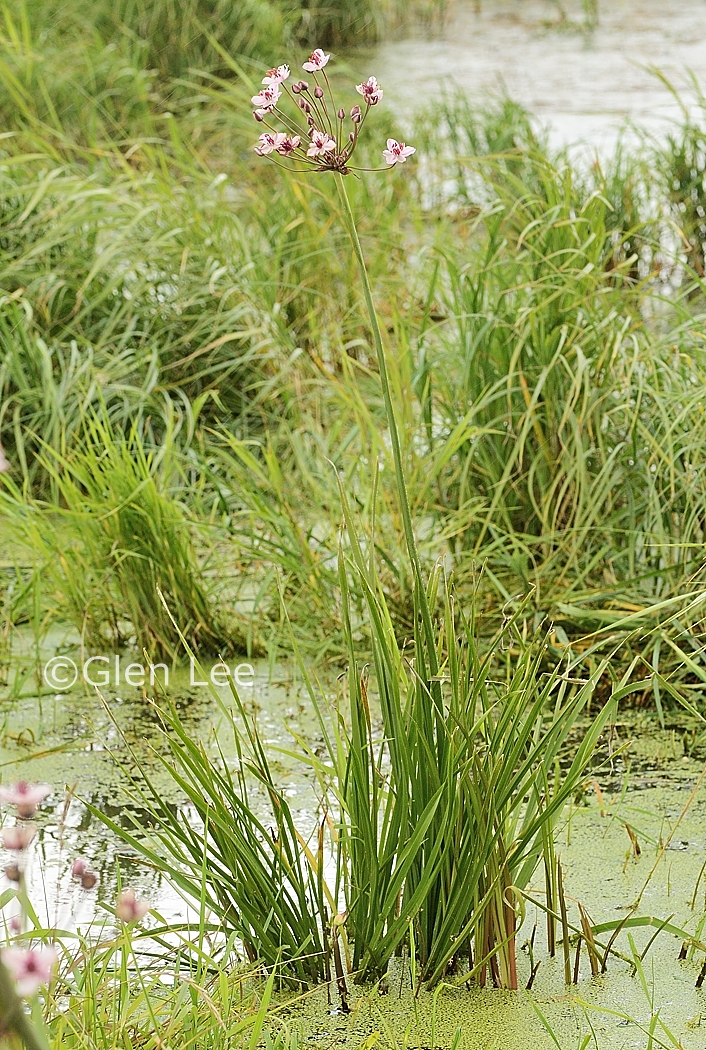
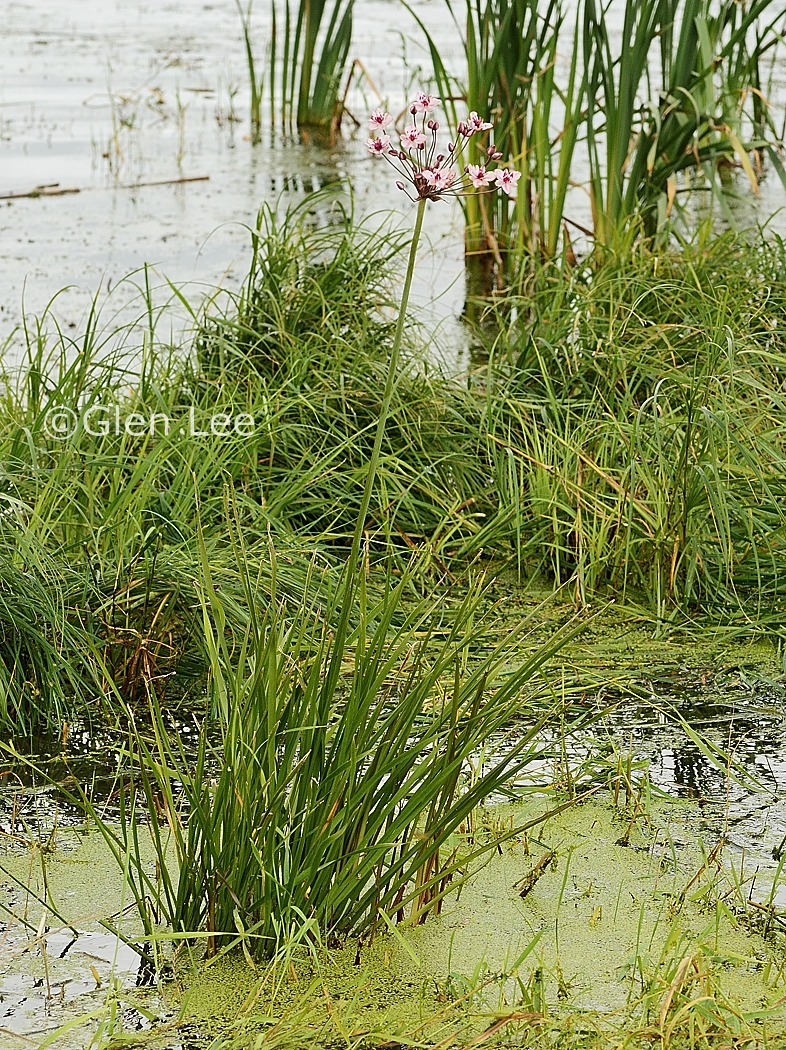
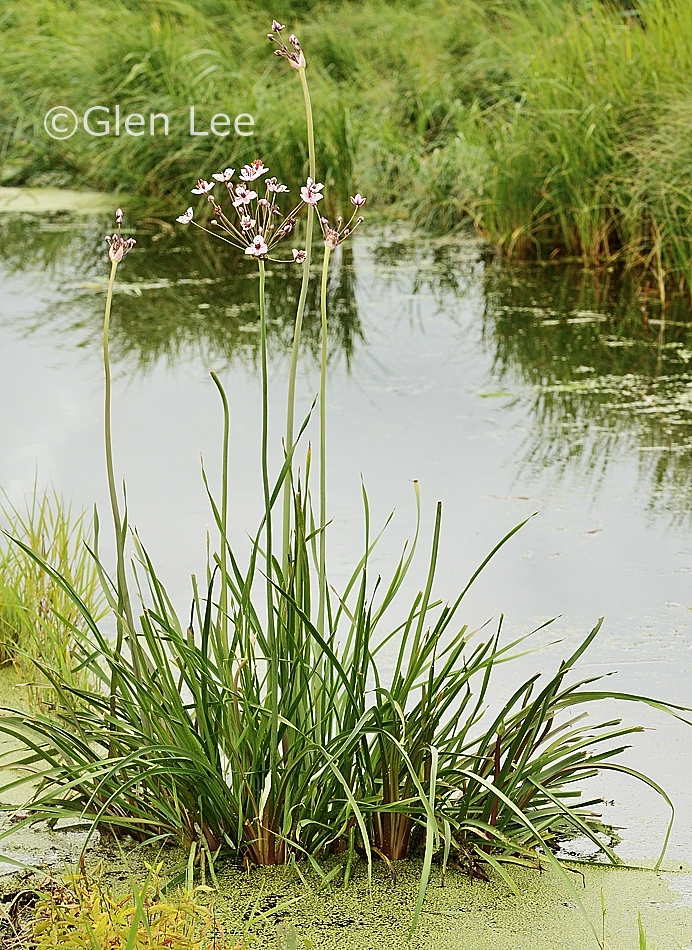
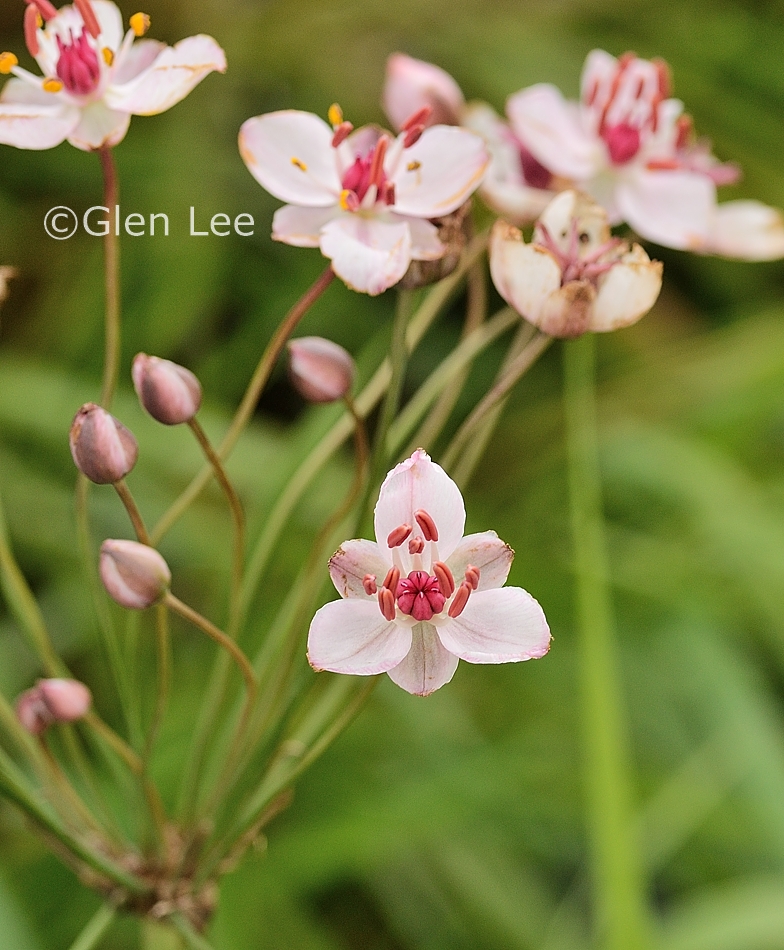
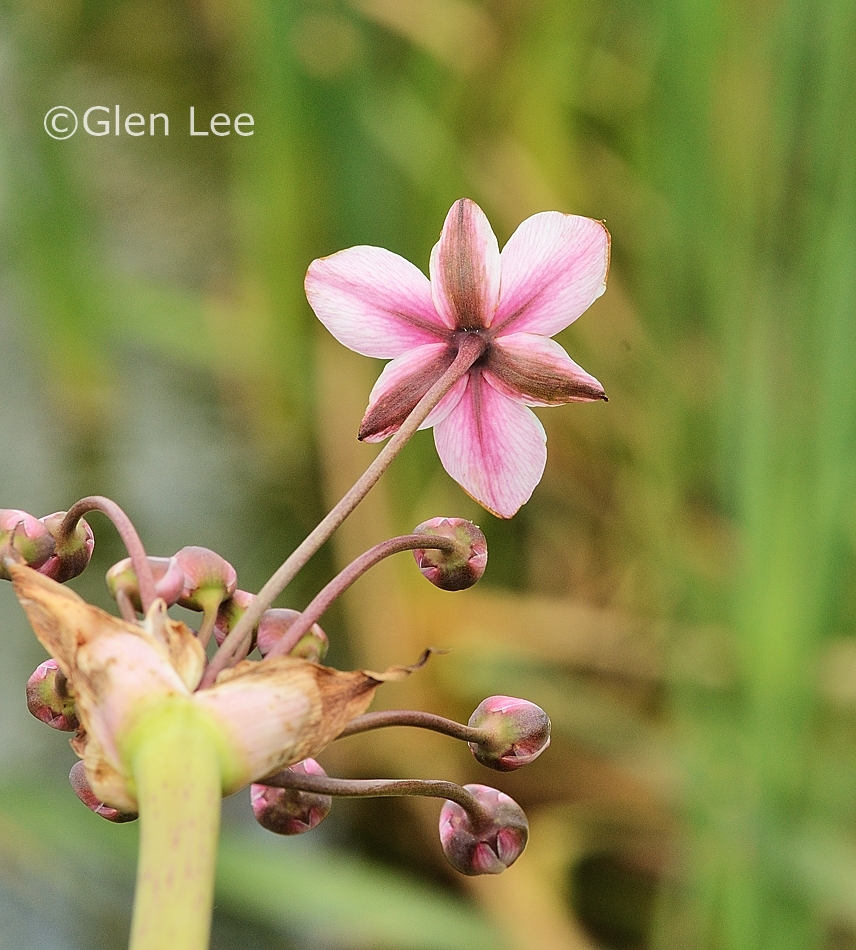
Underside of flower.
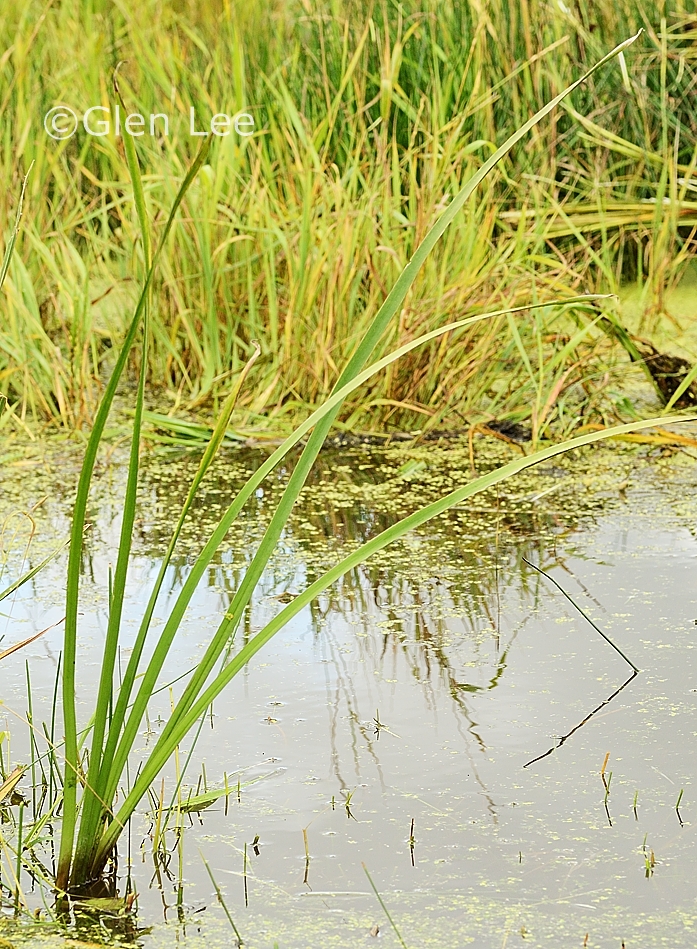
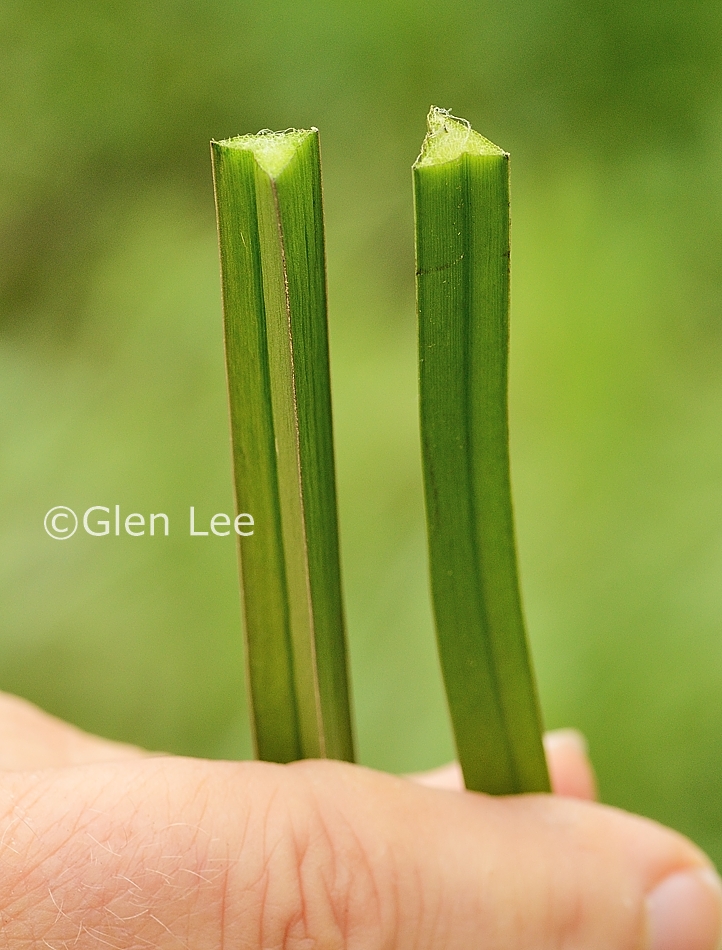
Leaves triangular in cross-section.
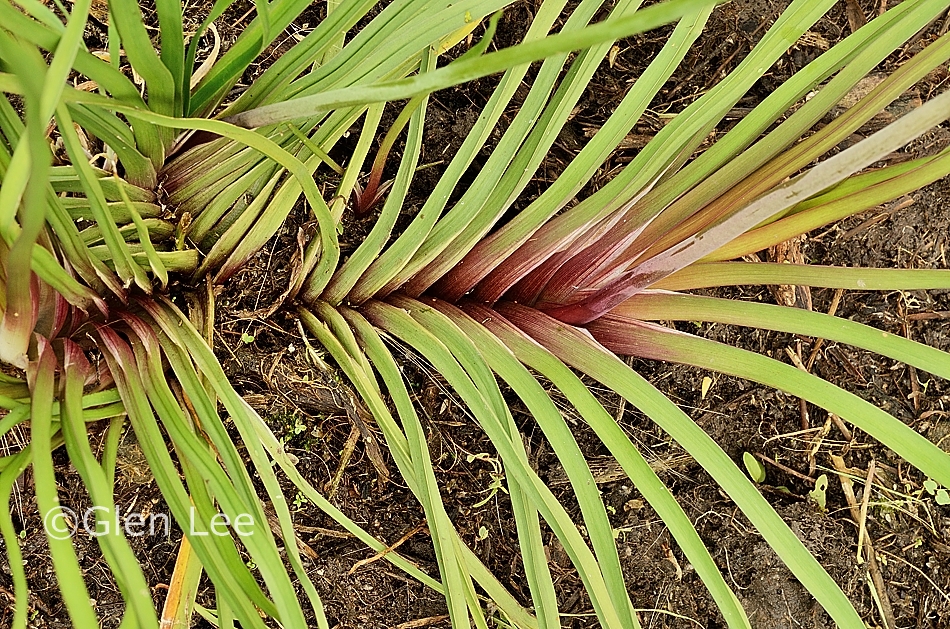
Looking straight down at crown of plant.
Origin: Introduced.
General: Aquatic perennial with an upright growth habit resembling a large sedge. Plants glabrous. An introduced ornamental, this plant is a serious threat to native wetland habitat by outcompeting and displacing native species. It has been designated a noxious weed by many Canadian provinces and American states.
Flowers: Flowers are light pink in colour, showy, have 3 petals and 3 sepals, and grow in a terminal umbel. Flowers measured to 25 mm diameter, petals measured at 13 mm long, and sepals 9 mm long. Umbels measured to 24 cm diameter.
Leaves: Basal, three-sided, spongy, taper at the tip, reddish at base. We measured leaves to 77 cm long, and up to 12 mm wide at their base. The leaves grow from the crown alternately, forming a V-shaped pattern.
Height: Height listed in Flora of the Great Plains to 100 cm or more, we measured plants to 118 cm tall.
Habitat: Marshes and muddy shorelines.
Abundance: Rare. As of 2015 has been found in only one wetland in Saskatchewan. The Native Plant Society of Saskatchewan has been leading a program to eradicate the plant from this wetland by hand-digging plants each August, removing several hundred plants each year. I had seen a significant reduction in the number of Flowering Rush plants in this wetland from 2013 to 2015 due to this effort. In 2019, NPSS believed Butomus umbellata had been eradicated from the wetland.
Has since been found in abundance along the South Saskatchewan river just east of the Alberta border, washing downstream (east and south) from ~ Calgary.
When and where photographed: Photos were taken August 16th in a wetland in south-central Saskatchewan, about 175 km northwest of our home in Regina, SK.